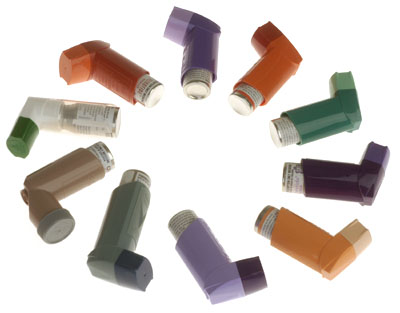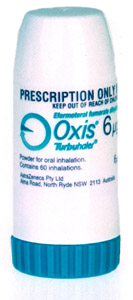
Once diagnosed with asthma, your doctor will prescribe certain medications for you customised to manage your asthma appropriately. There are three main types of asthma medications:
- Preventers - for long-term control, to prevent future attacks
- Oral medications
- Relievers – fast acting relief medications for acute asthma attacks
- Symptom controllers - for ongoing management of asthma symptoms
Most asthma medications are inhaled so they can act directly at the site of the problem; the inner wall of the airways. Your doctor may prescribe a combination of the above medications in order to best manage your asthma with minimal interruption of your daily living.
How your preventer medicine helps
Your preventer medicine reduces the redness and swelling in your airways and dries up the mucus. Preventers need to be taken as prescribed by your doctor, even when you have no symptoms of asthma.
Most preventer medications are based on steroids very similar to those produced by your body, and are considered to be a safe and very effective way to prevent acute asthma attacks. Some preventer agents are not steroid based – referred to as nonsteroidal agents – and may be an attractive option for patients or parents of children with asthma.
Preventers must not be used in an asthma emergency; they are used to manage your asthma on a day to day basis. Some preventers come in pressurised canisters, often called puffers; some come in breath-activated devices or dry-powder inhalers; and some preventers are available as tablets (chewable tablets for children).

Preventer medications include:
- Qvar (beclomethasone)
- Flixotide (fluticasone)
- Intal Forte CFC-Free (sodium cromoglycate)
- Pulmicort (budesonide)
- Singulair (montelukast) *nonsteroidal
- Tilade CFC-Free (nedocromil) *nonsteroidal
Oral Medications

Oral tablets such as Singulair are available to prevent and treat asthma. These tablets reduce allergic reaction in the cells. This type of medication can reduce the occurrence of asthma attacks when taken regularly but do not work rapidly enough to be effective during an acute asthma attack.
How your reliever medicine helps

Your reliever medicine works quickly to relieve asthma symptoms by relaxing the muscles around the airways, making the airways wider and breathing easier. Relievers are the main medication to use in an asthma emergency. Whilst reliever medications are essential during an asthma attack, they will not control your asthma symptoms long term. Your reliever medicine should not replace your preventer medicine; they should be used in conjunction with each other as directed by your doctor.
Reliever medications include:
- Airomir, Asmol, Epaq and Ventolin (brands of salbutamol)
- Bricanyl (terbutaline).
 |
How your symptom controller helps

Symptom controllers can help people who still get symptoms even when they take regular preventer medicines. If you need a symptom controller, it should be taken in addition to your preventer medication. It should not be taken instead of a preventer.
Like your reliever medicine, your symptom controller helps widen the airways. But while your reliever works for around 4-6 hours, symptom controllers work for up to 12 hours at a time. However, they are not effective for quick relief of symptoms so they should not be used for asthma first aid.
Symptom controllers include:
- Foradile and Oxis (both brands of eformoterol)
- Serevent (salmeterol).
Combination Medications
There are combination medications that combine a symptom controller
and a preventer in the one puffer.
Combination medications include:
- Seretide (fluticasone and salmeterol)
- Symbicort (budesonide and eformoterol).
Combination medications generally need to be taken at the same time each day at the dosage prescribed by your doctor but some Asthma Action Plans use Symbicort for emergency therapy.
Your doctor can advise you on the availability under the Pharmaceutical Benefits Scheme of the drugs mentioned above.

How your spacer device works
It is recommended that where possible, puffers be used with a spacer. A spacer is a special device shaped like a clear plastic football or tube that allows for easier administration of the puffer medication.
Puffer medications are pumped into the spacer device and are then inhaled through a facemask or mouthpiece. Using a spacer helps control asthma because it allows more medication to be inhaled into the lower airways of the lungs and can also reduce the side effects of preventer medications.

